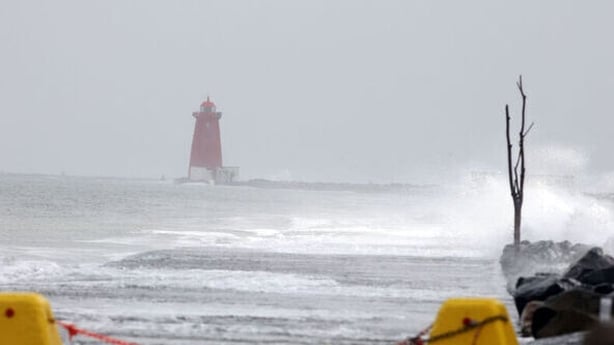Analysis: when we use people's names for non-human things, they gain more of our interest and attention, but this also has pitfalls
By Jane Pilcher, Nottingham Trent University and Anna-Maria Balbach, University of Münster
Since 2015, forenames has been used to label storms as a strategy for improving people's awareness of severe weather warnings. The list of names for the 2025/26 storm season, which runs until 31 August 2026, was compiled by Met Éireann in conjunction with the UK's Met Office and KNMI, the Dutch national weather forecasting service.
Each of the three respective meteorological services has contributed seven names to this season's list. The seven names chosen by Met Éireann are: Bram, Fionnuala, Gerard, Kasia, Marty, Patrick and Tadhg. The remaining 14 storm names are: Amy, Chandra, Dave, Eddie, Hannah, Isla, Janna, Lilith, Nico, Oscar, Ruby, Stevie, Violet and Wubbo.
Met Éireann had called on Ireland's public to submit their preferred names through a social media campaign. More than 10,000 names were received from 4,137 members of the public. Stevie, submitted to the UK Met Office, was inspired by a little girl named after the Stevie Nicks song Dreams, which includes the line: "Thunder only happens when it's raining."

Getting the public involved in naming storms injects an element of fun into the otherwise serious business of heightening awareness of perilous weather. When we use people's names for non-human things, we anthropomorphise (or humanise) them, and so they gain more of our interest and attention. But naming storms also has its pitfalls.
How storm names reflect cultural tendencies
Using people's forenames to identify things such as storms, that are not people, can also have unintended consequences. In 2015, Isis was removed from the UN's storm name list and people with the name Isis have faced stigma, because it is now associated with a terrorist group. Similary, the devasting hurricane Katrina of 2005 led to this forename dropping down the rankings of popular baby names in the US, from position 281 to 942 in 2012.
Naming problems have been a constant thread throughout the pandemic too. Mere geographical names for new variants have led to instances of racism and xenophobia directed at people from the places invoked. And in 2020 a boy called Corona was reportedly bullied because he bore the informal name for the virus.
We need your consent to load this rte-player contentWe use rte-player to manage extra content that can set cookies on your device and collect data about your activity. Please review their details and accept them to load the content.Manage Preferences
From RTÉ Radio 1's Ray D'Arcy Show, BBC weather presenter Barra Best on storm names
Including names like Sayuri on lists of storm names does give recognition to how names signal cultural diversity. However, it can adversely impact people too. If a minority ethnic forename is used to name a storm that turns out to wreak extensive damage, injuries or deaths, people with that forename may subsequently experience even more disadvantage than they already face due to their name being considered "non-white" or "foreign".
Historic building and street names can lead to similar predicaments. While the public figures honoured might have been esteemed at the time of christening, with today's knowledge they are often no longer considered worthy candidates.
Should the buildings, public squares and roads bearing the names of slave traders in London and Liverpool, for example, be renamed? Or should they keep their names and serve as a cautionary reminder of the past?

In Germany, historical commissions have spent decades tracking down the many streets named by the Nazis after their idols and most ardent members. These are then renamed, in some instances, with the names of victims of the Nazi regime. Similarly, Berlin is in the process of substituting the colonialists named on street signs in its north-western Afrikanisches Viertel (African quarter) with the names of African liberation fighters.
The naming of storms, streets or buildings is a complicated and risky business precisely because names are not just benign words. They are powerful cultural workhorses, brimful of meanings that say so much about who we are and how we experience the world.
Follow RTÉ Brainstorm on WhatsApp and Instagram for more stories and updates
Jane Pilcher is Associate Professor of Sociology at Nottingham Trent University, Anna-Maria Balbach is Research Project Leader in German Linguistics at the University of Münster. A version of this article was originally published by The Conversation.
The views expressed here are those of the author and do not represent or reflect the views of RTÉ

